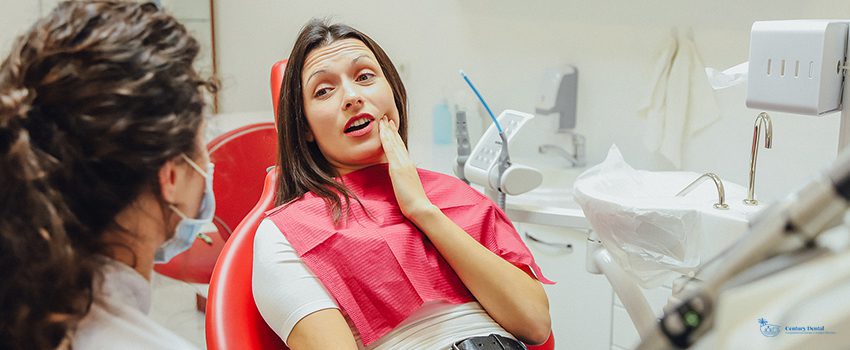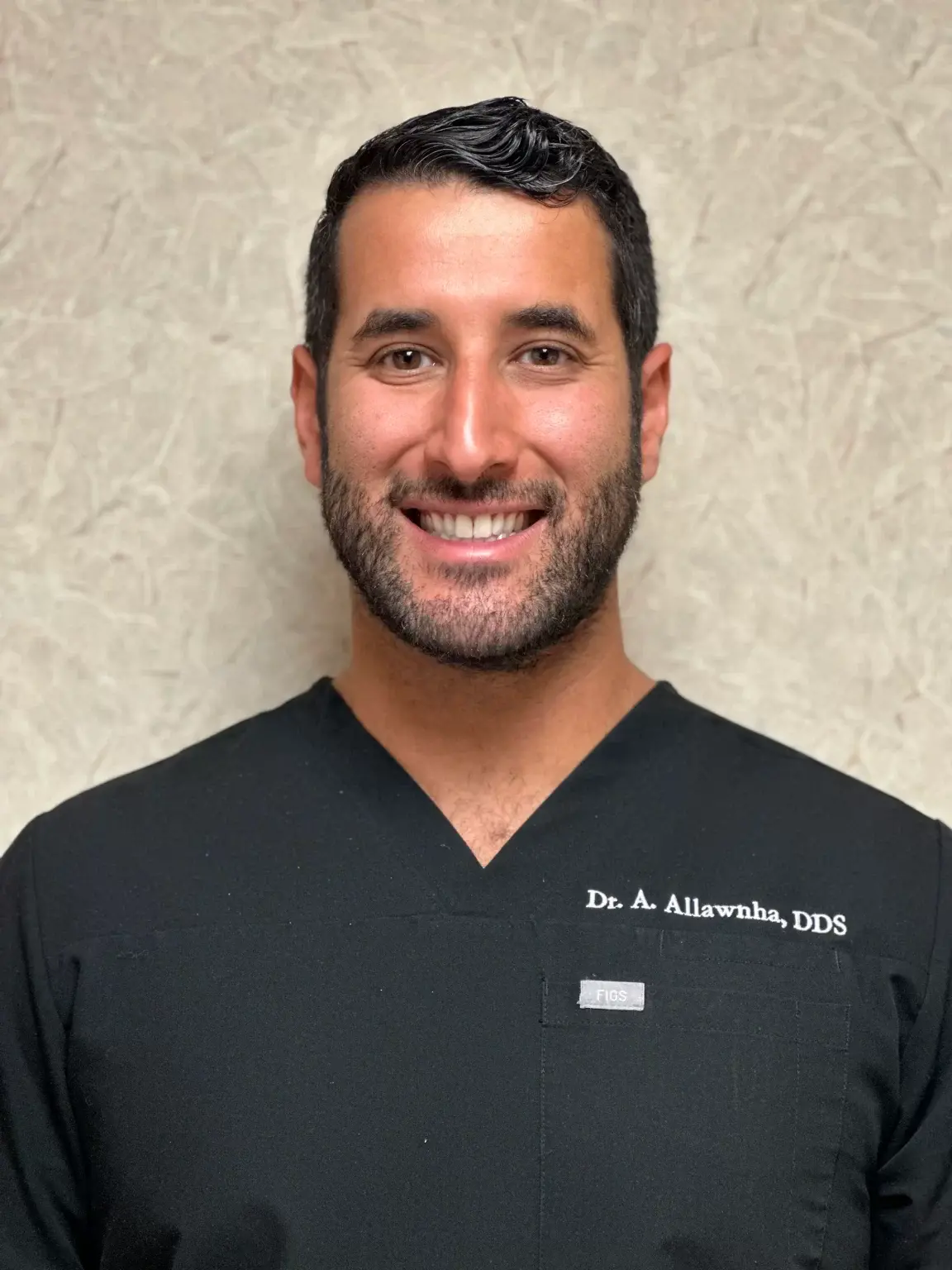Toothaches are usually the first sign you have an infected tooth. Or worse, an abscessed tooth.
A dental abscess or tooth abscess, is when pus builds up inside the teeth and gums.
They are painful most of the time, but not all the time. They also do not heal by themselves and can sometimes spread to other parts of your body. Regardless of how painful they are, it’s important to immediately have a dentist examine your abscessed tooth. The more time you wait to see your dentist, the more likely the tooth infection will spread to other teeth or tissues.
What is an Abscess Tooth?
A dental abscess is a pus buildup in the teeth, gums, or bone that holds teeth in place, often caused by bacterial infections.
The most common cause of an abscess tooth is an accumulation of bacterial infection in the soft pulp.
Plaque, a byproduct of saliva and food, contains bacteria that can stick to teeth and damage them. The bacteria can spread to the gums and soft tissue if the plaque isn’t removed with regular and thorough brushing. Continuously neglecting your oral hygiene may result in the eventual formation of an abscess.
There are three types of dental abscess based on their location and severity:
- Gingival abscess: This is an infection that develops under the gums. This gum infection does not typically affect the tooth or its supporting structures.
- Periapical abscess: A periapical tooth abscess is an infection that occurs at the root’s tip. It occurs when bacteria from outside the tooth spreads to its pulp through a cavity or fracture. The pulp is the tooth’s innermost portion, which contains nerves and blood vessels. A pulp infection can spread to the bones through the tooth’s root, eventually leading to an abscess.
- Periodontal abscess: The infection begins in the bone and tissues supporting the tooth. Periodontal abscesses are more common in adults than in children.
Signs of an Abscess Tooth
Sometimes, the area surrounding an abscessed tooth may hurt, but not always. It’s common to feel a sharp, throbbing pain when you press down on your tooth. The pain could spread to your jaw, neck, or other areas of your face on the same side of the affected area.
Other symptoms you may notice are:
- Pain that worsens when you lie down, disturbing your sleep
- Red or swollen face
- Tender, discolored tooth
- Swollen gums
- Sensitivity to temperature
- Bad breath and unpleasant taste
You may feel unwell and feverish if the dental infection spreads. In extreme cases, you may experience difficulty opening your mouth and breathing.
What Causes Tooth Abscess?
In most cases, a dental abscess is a result of a dental infection caused by bacteria in plaque. Other factors that may contribute to abscess formation include:
Poor Oral Hygiene
Poor oral hygiene is the top cause of a tooth abscess. According to a survey conducted by the National Center for Health Statistics, 91% of adults in the United States had dental caries, a direct result of poor oral health. If you don’t floss and brush your teeth often, plaque can form on your teeth. Neglecting to take proper care of your gums and teeth increases your chances of developing tooth decay, gum disease, and tooth abscess.
Starchy and Sugary Food
Too many sugary foods, like sweets and sodas, promote the growth of bacteria in plaque, leading to decay that could result in an abscess tooth.
Injuries
Damaged teeth or gums make it easier for bacteria to get into your teeth.
Weak Immune System
People with weak immune systems include patients with underlying conditions like diabetes and those undergoing treatment, including steroid medication or chemotherapy.
Dry Mouth
A dry mouth increases the risk of tooth decay. It’s often a side effect of medications or aging.
When to See a Dentist?
If you notice any symptoms or signs of an infected tooth, see your dentist immediately.
If you have a fever, swelling, difficulty breathing or swallowing, and can’t get to your dentist, go to the emergency room. This could be a sign that the infection has reached deeper into your jaw, surrounding tissue, or other parts of your body.
Diagnosis
Your dentist will examine your teeth and surrounding areas. They may also:
- Gently tap your teeth. Teeth with an abscess are sensitive to pressure or touch.
- Take an X-ray. X-rays can reveal an abscess. Your dentist might also recommend X-rays to check for abscesses elsewhere.
- Take a CT scan. CT scans allow them to check if the infection has spread to your neck and its extent.
Home Remedies for an Abscessed Tooth
You can relieve your pain at home with some simple actions.
- Avoid eating or drinking food that is too hot/cold.
- Use a soft toothbrush.
- Chew on the side of your mouth without the abscess.
- Avoid flossing around the affected area.
Home remedies may help make a patient feel more comfortable while waiting for treatment. However, it is best to see a professional to prevent any complications from a dental abscess.
Dental Abscess Treatments
Dentists treat a dental abscess by draining the pus and removing the source of infection. The location and severity of the abscess will affect how your dentist treats them.
Some options for dental abscess treatments include:
Incision and Drainage
Dentists administer a local anesthetic and make an incision in the gum to drain the abscess and clean it with saline. Sometimes, dentists use a small rubber drain to decrease the swelling. However, it’s a temporary solution and requires further treatment.
Root Canal
This tooth abscess treatment helps remove the infection and allows you to keep your tooth intact. Dentists usually perform root canals to treat a periapical tooth abscess. They drill a hole into the tooth to drain the pus and clean out any damaged tissue to treat the abscess. Then, they insert a root filling into the space to prevent any reinfection.
Dentists may finish the procedure by applying a crown. Crowns strengthen the tooth, particularly the ones at the back. Taking care of your restored teeth will help them last a lifetime.
Surgery
Patients with a periapical or recurring dental infection might need to have the diseased tissue surgically removed.
A periodontal abscess or recurring infection will require oral surgeons to reshape a patient’s gum tissue and remove periodontal pockets.
If a dental abscess returns after surgery, the tooth may be removed.
Pain Killers
While you wait to see a dentist for treatment, painkillers may help manage your pain. Ibuprofen is the ideal painkiller for abscessed teeth. You may also take paracetamol as an alternative if you cannot take ibuprofen for medical reasons.
However, some pain medications are not suitable for certain patients
Do not use ibuprofen if you have asthma.
If you have or ever had stomach cancer, do not take ibuprofen.
Children under 16 years old should not be given aspirin.
If you are pregnant or breastfeeding, don’t take aspirin.
Antibiotics
Dentists may prescribe antibiotics like amoxicillin and metronidazole to prevent the spread of infection in conjunction with painkillers. However, patients should not use dental abscess antibiotics to replace treatment with a dentist or delay treatment.
Tooth Abscess Prevention
Keeping your gums and teeth as healthy as possible reduces the chances of getting an abscessed tooth.
Some ways to prevent dental abscess include:
- Using floss or an interdental toothbrush at least once per day to clean between your teeth
- Brushing your teeth twice daily with fluoride toothpaste – at least 2 minutes each
- Spitting out any toothpaste left behind after brushing, instead of rinsing the mouth
- Reducing sugary and starchy foods and drinks, especially between meals and shortly before bed
- Visiting your dentist frequently
- Drinking fluoridated drinking water
- Replacing your toothbrush every three to four months, or when its bristles become frayed
Tooth Abscess Complications
Sometimes, even with seemingly successful treatment, rare complications may still occur.
Some rare complications of a dental abscess include:
Dental Cysts
Dental cysts are fluid-filled cavities that form at the base of the tooth’s root. They are highly likely to get infected, especially if the abscess has not been treated. The patient may need antibiotic treatment or surgery if this occurs.
Osteomyelitis
In this condition, bacteria from the abscess enter the bloodstream and infect the bone located near the abscess. The abscess can spread to other bones in the body and cause severe pain, swelling, and nausea. Osteomyelitis treatment involves intravenous or oral antibiotics.
Cavernous Sinus Thrombosis
Bacteria spreads and triggers a blood clot formation at the cavernous sinus, a large vein located at the base of the brain. Cavernous sinus thrombosis can be treated with antibiotics and sometimes with surgery to drain the sinus. It’s a rare condition, but it can be fatal.
Maxillary Sinusitis
The bacteria from the abscess may spread to small spaces behind the cheekbones called maxillary sinuses. Although not serious, this condition can be painful and cause the cheeks to feel tender. Patients may even experience fever.
Sometimes, the condition resolves on its own. The doctor may prescribe antibiotics, depending on the severity of the condition.
Ludwig’s Angina
Ludwig’s Angina can be fatal. The spread of bacteria from the dental abscess may infect the floor of your mouth. The patient might feel intense pain and swelling under the tongue or neck. In severe cases, breathing may become difficult. Medical professionals use antibiotics to treat the condition. It may also require a procedure to open the airways if the patient has difficulty breathing.
Have Your Dental Abscess Checked Today
Don’t ignore the pain it’s causing.
Our dentists in Madeira Beach, FL, will make sure to treat your dental abscess and any dental issues you may have. Call us for any inquiries about dental abscess treatment; we’ll gladly help you achieve your oral health goals.





